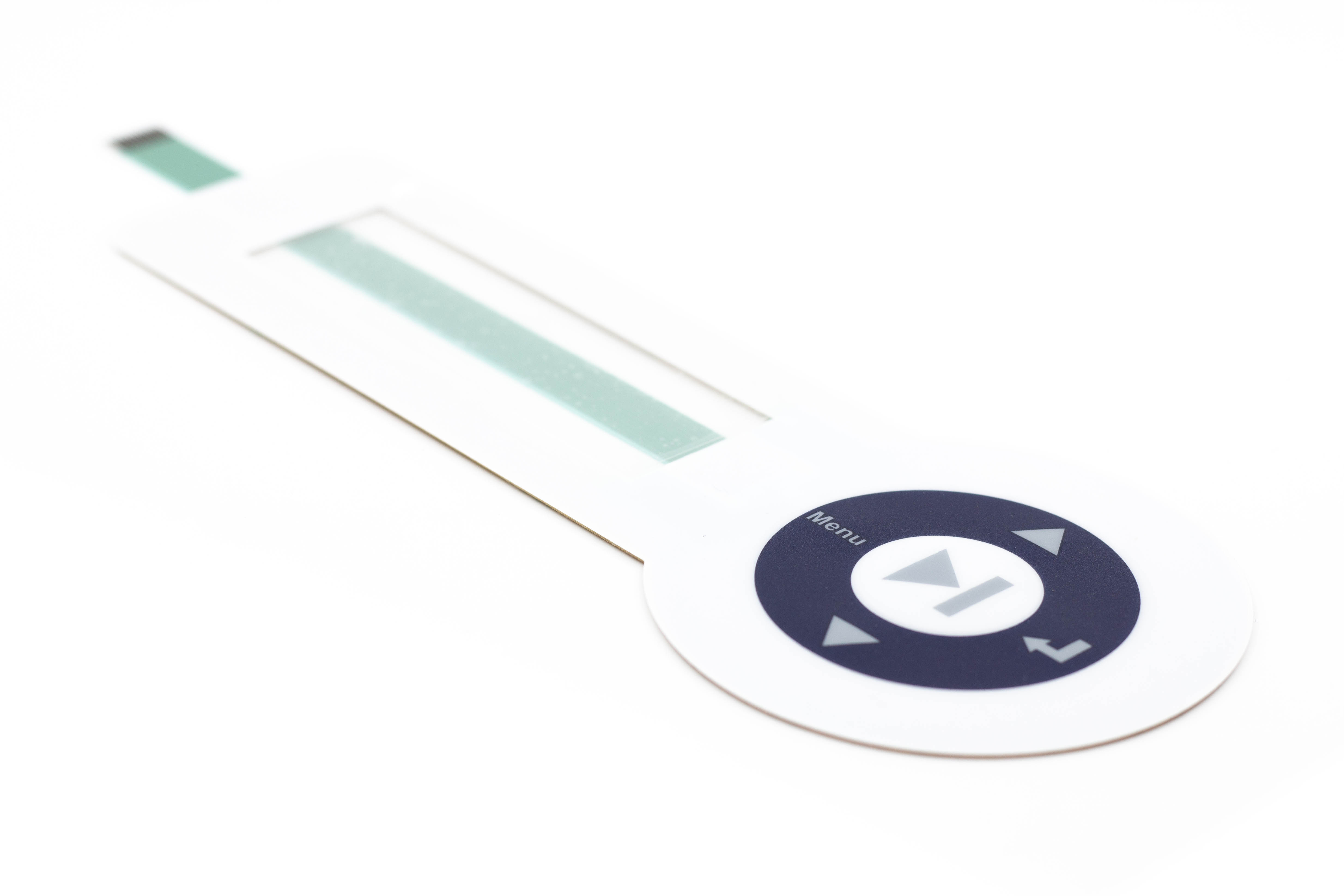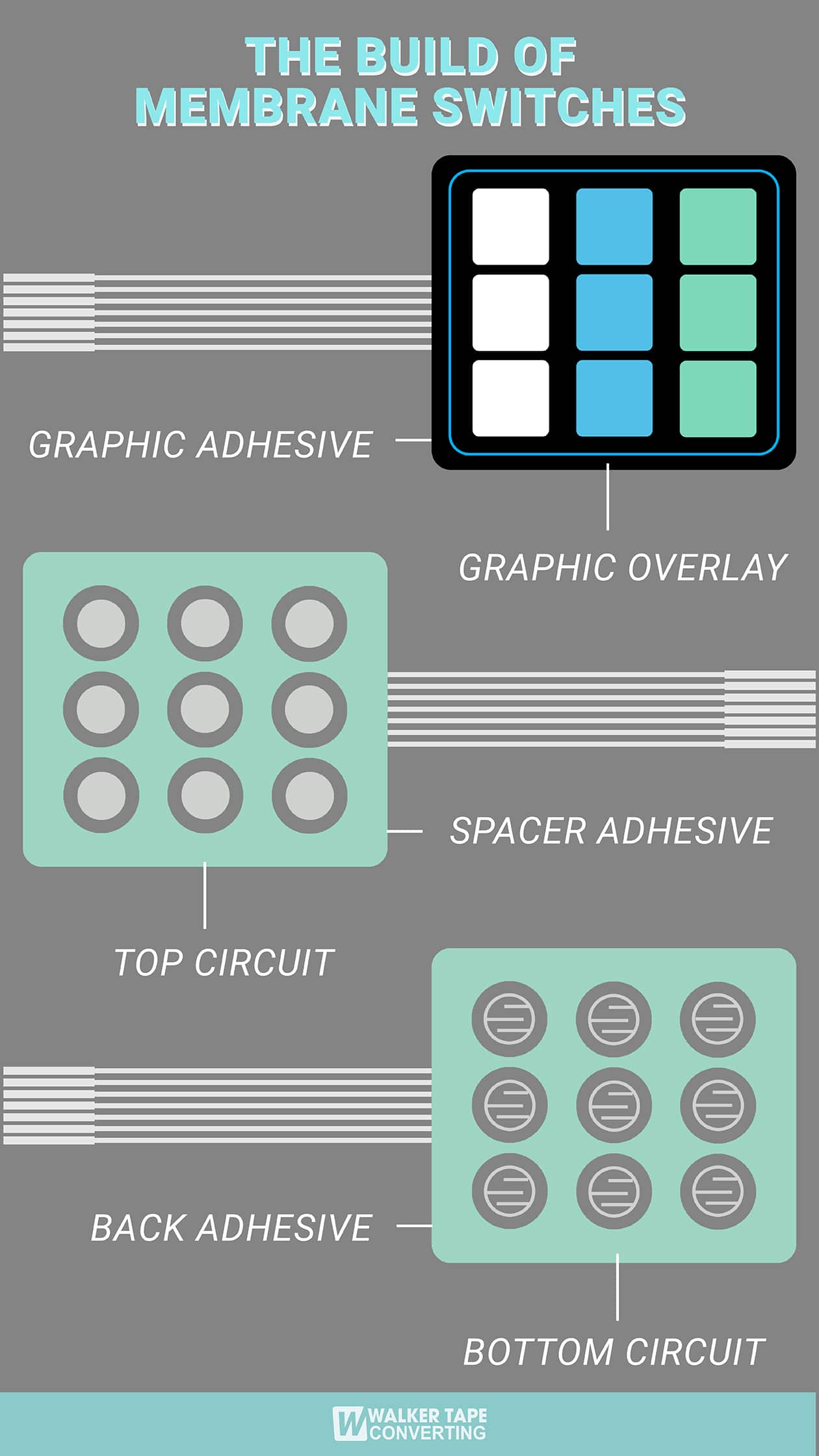How membrane switch drives sustainability in electronic product design
Checking out the Uses of Membrane Layer Switch in Different Industries
Membrane layer buttons are important parts throughout numerous industries, consisting of customer electronics and vehicle industries. Their resilient and lightweight nature enables effective use in small tools. In addition, these switches offer resistance to ecological variables, enhancing their durability. As markets advance, the need for customizable services grows. This increases vital inquiries about the future applications and developments of membrane switch innovation. What brand-new opportunities exist in advance for this functional part?
Membrane Layer Switches in Consumer Electronics
Membrane layer buttons play a vital function in consumer electronics, providing an efficient interface for different gadgets. These buttons are created to be light-weight and slim, making them suitable for modern-day gizmos where room goes to a costs. Their versatility enables for combination into diverse items, varying from family home appliances to portable gadgets. The tactile feedback offered by membrane changes improves individual communication, ensuring a seamless experience.Moreover, membrane switches are immune to dampness and dust, which is essential for maintaining functionality in everyday settings. They can be customized with numerous graphics and shades, enabling producers to align with branding needs. Furthermore, the cost-effectiveness of membrane layer button modern technology makes it a recommended choice for mass-produced electronic devices. As customer need for streamlined, easy to use tools proceeds to grow, the value of membrane buttons in providing trustworthy, effective user interfaces ends up being increasingly noticeable, solidifying their area in the electronics industry.
Applications in the Automotive Market
In the automobile sector, membrane buttons are utilized to boost both functionality and visual appeal within lorries. These switches are generally integrated right into dashboards, control panels, and infomercial systems, offering a streamlined and modern interface for travelers and drivers. Their style permits seamless combination with numerous materials, which contributes to the total aesthetic appeal of the automobile's interior.Furthermore, membrane layer switches are valued for their toughness and resistance to ecological elements such as wetness, dirt, and temperature changes. This makes them excellent for applications in automotive settings, where dependability is crucial. Additionally, they can be personalized with different graphics and formats, permitting suppliers to develop unique branding elements and individual experiences.As vehicle modern technology remains to advance, the need for innovative control solutions will likely drive better innovations in membrane layer button applications, guaranteeing they continue to be an important element in contemporary car style.
The Role of Membrane Layer Switches Over in Health Care
Although usually overlooked, the duty of membrane layer buttons in health care is vital for making sure the effective operation of medical tools and tools. These buttons work as individual interfaces for a variety of applications, consisting of diagnostic machines, person surveillance systems, and surgical instruments. Their layout enables easy cleansing and sterilization, which is essential in keeping hygiene in clinical environments.Membrane switches are additionally understood for their sturdiness and resistance to wear, making them excellent for gadgets that endure constant use. Their responsive comments provides customers with a trustworthy experience, enhancing use for healthcare specialists. Furthermore, membrane layer switches can be tailored with various graphics and designs, ensuring that they satisfy specific demands of various medical applications. On the whole, the combination of membrane layer switches in health care modern technology not only enhances functionality however additionally adds to individual safety and security and operational effectiveness within clinical facilities.
Aerospace Innovations With Membrane Switch Over Innovation


Industrial Automation and Membrane Change Solutions
Membrane layer button technology is increasingly discovering applications in commercial automation, where integrity and performance are paramount. click here to find out more These switches work as important elements in different automated systems, assisting in customer communications in environments that demand robustness and resilience. Their style enables for a smooth combination with control board and devices, making certain ease of use for operators.In industrial settings, membrane switches can withstand harsh conditions, consisting of direct exposure to dirt, dampness, and severe temperatures. This durability makes them optimal for applications in manufacturing, logistics, and process control. Additionally, their customizable features enable business to produce tailored solutions that meet specific functional needs.The tactile feedback provided by membrane layer switches over improves user experience, reducing the likelihood of mistakes during operation - membrane switch. As sectors remain to develop towards better automation, the duty of membrane switch modern technology is expected to expand, enhancing and driving efficiencies operations in complicated industrial settings

Often Asked Inquiries
What Products Are Commonly Used in Membrane Change Building And Construction?
The materials commonly used in membrane layer switch building include polyester, polycarbonate, sticky layers, printed graphics, and conductive inks. These components guarantee sturdiness, responsiveness, and versatility, making them ideal for Look At This different electronic applications in varied fields.
Exactly How Do Membrane Switches Contrast to Standard Switches in Durability?
Membrane layer changes generally offer premium toughness compared to traditional buttons, as they are less vulnerable to mechanical damage. Their sealed layout secures against dirt and moisture, boosting durability in various applications.
Can Membrane Layer Switches Be Custom-made for Particular Applications?
Membrane layer switches can indeed be personalized for particular applications. Their layout flexibility enables tailored forms, functionalities, graphics, and sizes, making them appropriate for varied settings and enhancing customer interaction across numerous electronic gadgets and equipment.
What Are the Environmental Factors To Consider for Membrane Layer Switch Disposal?
The ecological factors to consider for membrane switch disposal consist of potential risks from products made use of, recycling chances, and adherence to laws. membrane switch. Proper disposal methods are necessary to reduce environmental influence and advertise sustainability within manufacturing processes
Exactly How Do Membrane Layer Switches Over Influence User Experience in Devices?
Membrane changes considerably boost user experience through tactile comments, toughness, and layout adaptability. Their seamless integration into devices fosters intuitive interactions, while their aesthetic charm can raise product presentation, eventually contributing to individual fulfillment and interaction. The responsive comments supplied by membrane changes enhances user interaction, ensuring a seamless experience.Moreover, membrane layer buttons are immune to wetness and dust, which is essential for maintaining functionality in everyday settings. In enhancement, membrane layer switches can be customized with various graphics and formats, guaranteeing that they fulfill certain demands of different clinical applications. Membrane layer switches are also immune to wetness and pollutants, ensuring durability and long life in different cockpit and cabin applications. Membrane layer button innovation is increasingly locating applications in industrial automation, where reliability and performance are vital. Membrane switches over normally provide superior toughness compared to traditional buttons, as they are less susceptible to mechanical wear and tear.